Ethiopie: 4 490 km, 29 jours
Jour n°23 (dimanche 31/10/10) - Coucher de soleil sur le campus de la douane éthiopienne
Jour n°24 (lundi 01/10/10): Métemma-Weldiya / 577 km
Jour n°24 - Pneu éclaté sur une pierre après 60 km... la journée s'annonce bien!
Jour n°24 - Les premières impressions sur l'Ethiopie
Jour n°24 - Arrêt obligatoire chez le réparateur de pneus: crevaison n°2!
Jour n°24 - Les hauts plateaux éthiopiens; altitude supérieure à 3000 m
Jour n°24 - Arrêt obligatoire: crevaison n°3!
Jour n°25 (mardi 02/11/10): Weldiya-Mekele / 270 km
Jour n°25 - Bienvenue dans le pays Afar
Jour n°25 - Les babouins éthiopiens
Jours n°25 au n°30 (mardi 02 au samedi 06/11/10)
°°° Expédition dans le Danakil °°°
Jour n°25 (mardi 02/11/10) - Mekele; on se prépare à partir pour le Danakil
Jours n°25 - Derniers paysages au-dessus du niveau de la mer
Jours n°25 - Une caravane transportant du sel
Jours n°25 - Un autre type de caravane
Jours n°25 - Ali Moussa, le guide francophone!
Jours n°25 - Premier bivouac aux portes de la dépression
Jours n°25 - Personne clé de l'expédition, le cuistot!
Jours n°26 (mercredi 03/11/10) - Helen, une Zimbabwéenne au milieu du Danakil
Jours n°26 - Pays Afar, pays des AK-47 (version 1)
Jours n°26 - En route vers Dallol, paysages de sel et de poussière à -130 m en-dessous du niveau de la mer!
Jours n°26 - Et là, au milieu de rien, on s'active pour exploiter le sel...
Jours n°26 - Pays Afar, pays des AK-47 (version 2)
Jours n°26 - L'exploitation du sel, une activité séculaire
Jours n°26 - Voilà ce qui arrive aux récalcitrants!
Jours n°26 - Un autre faciès de sel et de poussière
Jours n°26 - Les militaires sécurisent la zone qui se situe non loin de l'Erythrée
Jours n°26 - Dallol
Jours n°26 - Les montagnes de sel
Jours n°26 - Proche des geysers de boue
Jours n°26 - La patinoire de sel
Jours n°26 - Les Marchaux
Jours n°26 - Camping à Ahmed Ella
Jours n°27 (jeudi 04/11/10) - En route pour l'Erta Ale en compagnie de deux KTMistes Gelada Riders
Jours n°27 - Pays Afar, pays des AK-47 (version 3)
Jours n°27 - Coincé dans les dunes de fech-fech
Jour n°27 - Où est la piste?
Jours n°27 - Julie & Julien
Jours n°27 - Le paradis des dromadaires
Jours n°27 - Piste de lave sur les contreforts du volcan
Jours n°27 - Coucher de soleil sur le camp de base de l'Erta Ale
Jours n°27 - Au sommet de l'Erta Ale, de nuit...
Jour n°28 (vendredi 05/11/10) - ... comme de jour
Jours n°28 - Les curiosités volcaniques
Jour n°28 - Prêts pour la descente
Jours n°28 - Pays Afar, pays des AK-47 (version 4)
Jour n°28 - Photo de groupe
Jour n°28 - Le camp de base, enfin!!!
Jour n°28 - Deuxième nuit à Ahmed Ella
Jour n°29 (samedi 06/11/10) - Chemin de retour vers Mekele
Jour n°30 - Retour dans le Tigray avec ses églises orthodoxes
°°°
Danakil - La page de Tonton Xavier / Danakil - Uncle Xavier's Page
Dear all
Ethiopia is a land of contrasts. We experienced them through an expedition of 2 600 km which brought us in eight days from the Abyssinian heights, to the rock hewn churches of Northern Tigray, and to the Abyss of the Danakil depression, in the territory of the Afar. While Ethiopia has more mountains than any other country of Africa, it has also the lowest point of terra firma of the continent (-116 m).
We experienced freezing below zero temperatures in the highlands, and the heat of the hottest place on earth. We witnessed how people of different origins or religions living in contrasting territories can occupy spaces constrained by the sheer size of Ethiopia's population, interact, and eventually live together.
Thirty million years ago, a planetary volcanic eruption produced thousands of meters of massive basaltic layers which are now profoundly being dissected by erosion, shaping the highlands of Ethiopia.
But tectonic forces are still at work today, ripping North East Africa apart irremediably through the rift valley. Water, tectonic, active volcanism and lava, salt, sand and dust are currently producing most impressive landscapes and a most poignant atmosphere, in the depth of the Danakil depression.
There, the volcano Erta Ale, the ultimate goal of our expedition, displays one of the six permanent lava lakes in the world. It forms part of an active volcanic chain which contributes to the widening of the rift valley. At the scale of Earth shaping, waters of the red sea will eventually and ineluctably again claim the lowest valley of Africa.
All the way between Addis Ababa in Oromia and Mekele in Tigray, the road is flirting here with the rift valley and there with the highlands, offering most spectacular views. It was harvest time, and everywhere people were busy harvesting teff, an endemic and national cereal, basis of the fermented pancake called injera.
In the village of Korem, the doorway to Tigray, and which became known worldwide in 1984 as it is there that a devastating famine of that time was exposed, we found rich fields and happy faces. The last raining season has been exceptional.
It is, however a reality that good years alternate with more difficult ones. One of the key challenges of Ethiopia is to ensure long term food security to an ever growing population. It is not surprising that Prime Minister Meles said a few years ago that for him the most powerful motivation to work daily for economic development was the humiliation of poverty.
After travelling endlessly up and down through sharp escarpments and spectacular landscapes, we eventually reached Northern Tigray, the cradle of Ethiopian civilization, ,and the home of rock hewn churches from the 15th century.
The Gheralta sandstone massif hosts many of those churches, some built of wood and stone, some carved into the rock. Many of them are of a difficult access. Based at the welcoming Gheralta lodge, owned by a sympathetic Italian, we explored some of the churches. Those were the only two nights spent in a lodge during our trip.
Travelling down from Mekele to the Danakil depression, we plunged in a few hours from the cool highlands to the inferno of the Danakil. The descent is impressive, from highly populated plateaux, to a Mediterranean style woodland, progressively moving to a purely mineral landscape, before reaching the salty and sandy plains of lowest Africa. Driving down, we met several caravans of camels going up the depression, loaded with salt.
The visit to the Dallol volcanic complex is extremely impressive, and intense. This is a universe of extreme heat, salt, water, and active volcanism. Salt can be found in every form possible. Water and volcanism combined produce most extraordinary colours and formations. It is there, on the salt lake of Karoum, that for centuries salt has been exploited in most extreme conditions, and still is.
From there, quite a sandy track brought us after several hours to the base of Erta Ale. Along the track, we met several settlements of nomadic Afar people. We finally drove through lava formations to the end of the track.
A four hour ascent on foot through solidified lavas eventually brought us to the summit of the caldera of the volcano. It is so hot that this is typically done at night. We left at 8 pm to reach the rim at midnight. Our camels followed with water and minimum bedding.
This was a fascinating walk, well worth the effort. The vast caldera hosts two craters, one of them with a lava lake. After viewing this spectacular environment in the early hours, from all angles possible, we walked down to our cars.
From there, we started our journey back to the highlands. East from Woldya, in less than 30 km, we were in the high plateaux of the highlands, at 3 500 meters, from around 1 500 meters. A Gelada baboon, endemic to Ethiopia, literally fell down the cliff to the road, faced us as if to show his unique ventral red marks, and disappeared in the precipice as fast as he came.
A farmer graciously authorised us to camp on his land. The night brought the temperature below freezing point. The high plateaux are heavily populated. The presence around us of many children was somehow overwhelming. They returned to their stone homes at night, to reappear with the first light.
It is somehow quite an experience to witness how these populations survive in such numbers in this harsh high altitude environment. But they do so, and have done so since biblical times. Today, their main challenge, and the one of their Government, is to move out of poverty in an environment increasingly constrained by the effects of a higher population density.
We learned so much of Ethiopia is a week time.
Xavier
Photos attached ( from Helen, Trevor, Julien et Antoine, Xavier):
1. Happy young faces from Korem
2. Typical aspect of rich fields around Korem: wheat, Sorghum, teff, …a patchwork of colours and crops
3. Teff is being harvested by women, and processed into grain by men using their cattle as seen in this picture
4. A view from the highly populated highlands from Southern Tigray, near the crater lake of Ashenge
5. Another view of the High plateaux, showing how they have been transformed over time into fields by people
6. The Gheralta mountain massif in Northern Tigray, home of the rock hewn churches
7. Travelling down to the Danakil depression, from Mekele. Camels are travelling up with salt
8. The environment is getting mineral as we travel down the depression. Views are spectacular
9. Time for preparing the food for our expedition, at camp. We hired a cook for the Danakil part of the journey, and he was keen to get some help from willing members of the expedition
10. On the salt lake of the Danakil
11. One of the many aspects taken by salt, as a result of combined forces from water and volcanism
12. Mountains of salt, being now eroded through time. It is said that salt deposits may have been pushed up by magmatic pressures
13. The Dallol unique spectacle, originated by combined forces of hydrology and volcanism
14. Exploitation of salt on the salt lake Karoum, done for centuries
15. Professor Gifford and his assistant Marchal are taking water samples for scientific posterity
16. Erta Ale lava lake, at last, by night
17. Erta Ale lava lake, early morning
18. Bivouac on the rim of the volcano, after several hours of night walk
19. Going down the volcanic cone of Erta Ale Volcano
20. Settlements of nomadic Afar in the Danakil depression
21. A gelada baboon, endemic to Ethiopia
22. A freezing early morning in the Highlands of Ethiopia
23. Stone houses of highlanders
24. Visitors sharing a bit of heat at camp, in the early morning of the Ethiopian Highlands
°°°
Jour n°30 - Entretien des motos à Mekele en compagnie d' Hervé et de Christophe, deux Gelada Riders!
Jour n°31 (dimanche 07/11/11): Mekele-Dessie / 389 km
Jour n°31 - Sur la route d'Addis Ababa
Jour n°31 - Un sourire d'Ethiopie
Jour n°31 - Vues sur un lac d'altitude
Jour n°31 - Que de virages!
Jour n°32 (lundi 08/11/10): Dessie-Addis Ababa / 386 km
Jour n°32 - Au petit matin en route vers le petit-déjeuner situé à 20 km de Dessie
Jour n°32 - Relais des routiers à Combolcha; le meilleur petit déjeuner d'Ethiopie
Jour n°32 - Et c'est reparti pour une journée remplie de virages
Jour n°32 - Après les virages, la plaine!
Jour n°32 - Montée vers le tunnel Mussolini
Jour n°32 - Le tunnel Mussolini
Jour n°32 - Picnic en compagnie des Geladas (voir page Biodiversité)
Jour n°33 à n°41 (mercredi 10/11/10 au jeudi 18/11/10) - Repos chez Tonton Xavier et Tante Vasile
Jour n°33 à n°41 (mercredi 10/11/10 au jeudi 18/11/10) - Petite balade sur les hauteurs d'Addis
Jour n°33 à n°41 (mercredi 10/11/10 au jeudi 18/11/10) - Monsieur l'Ambassadeur avant d'aller au boulot
Jour n°33 à n°41 (mercredi 10/11/10 au jeudi 18/11/10) - Petite photo de famille
Jour n°42 (vendredi 19/11/10): Addis Ababa - Lac Langano / 266 km
Jour n°42 - Le travail du tefle
Jour n°42 - Descente dans la vallée du rift
Jour n°42 - Le lac Langano
Jour n°43 (samedi 20/11/10): Lac Langano - Dinsho / 220 km
Jour n°43 - Lever de soleil sur Karkaro Beach
Jour n°43 - Sur la route du Parc National du Mont Balé
Jour n°43 - Arrivée au Parc National
Jour n°43 - La vue de chez Thadaigh et Anouchka, nos hôtes
Jour n°44 (dimanche 21/11/10) - Escapade dominicale dans la Web Valley
Jour n°44 - Web Valley: petits passages techniques!
Jour n°44 - Web Valley: les naturalistes (et non les naturistes!) en pleine action...
Jour n°44 - Web Valley: mais où est la piste?
Jour n°44 - Web Valley: mais où est Julien?
Jour n°44 - Web Valley: Julien?!?
Jour n°44 - De retour au chalet
Jour n°45 (lundi 22/11/10 ) - En route pour le plateau du Sinetti; crevaison après 5 km - merci la Web Valley!
Jour n°45 - Plateau du Sinetti, la route la plus haute d'Afrique (4 125m)!
Jour n°45 - La descente sur la forêt Arena (versant Sud du plateau)
Jour n°46 (mardi 23/11/10) - Le village de Rira, l'endroit idéal pour une panne d'Alternateur!
Jour n°46 - Retour forcé à Dinsho... avec une autre petite Arena
Jour n°46 - L'occasion de faire la photo de groupe que l'on avait oublié à l'aller
Jour n°47 (mercredi 24/11/10) - Et malheureusement retour forcé sur Addis! Dinsho - Addis Ababa / 474 km
Jour n°48 & 49 (jeudi 25/11/10 & vendredi 26/11/10) - Tentative de réparation à l'atelier de Carlos (un Gelada Rider), mais malheureusement nécessité de se faire envoyer un autre rotor de Belgique
Jour n°50 (samedi 27/11/10): Addis Ababa - Hagere Maryam / 501 km
Jour n°50 - Hotel à Hagere Maryam
Jour n°51 (dimanche 28/11/10): Hagere Maryam - Moyale / 333 km
Jour n°51 - Les derniers paysages d'Ethiopie
Jour n°51 - Arrêt obligé à Moyale côté Ethiopie pour cause de frontière fermée le dimanche (du moins les douanes, mais pas l'immigration!)























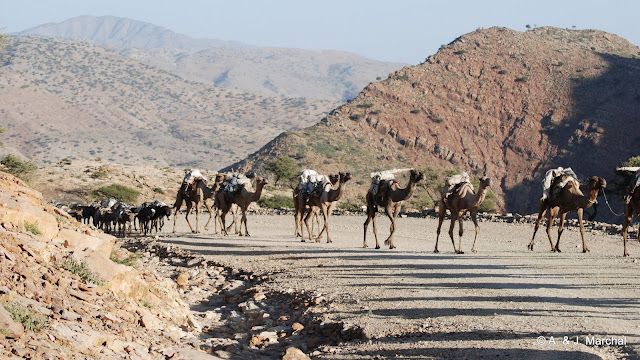























































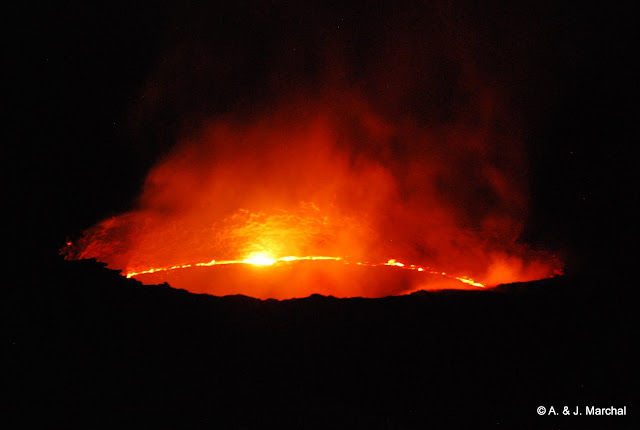























































































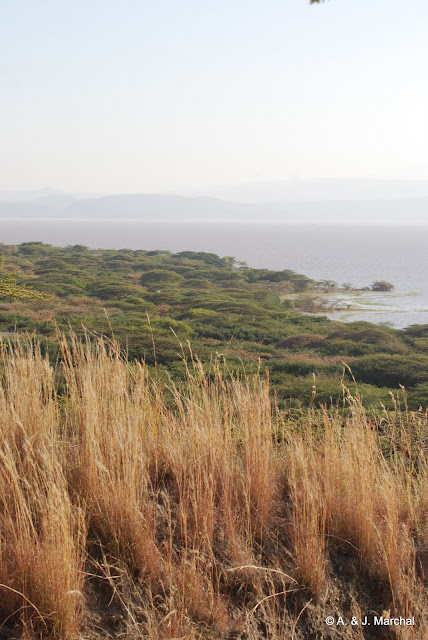








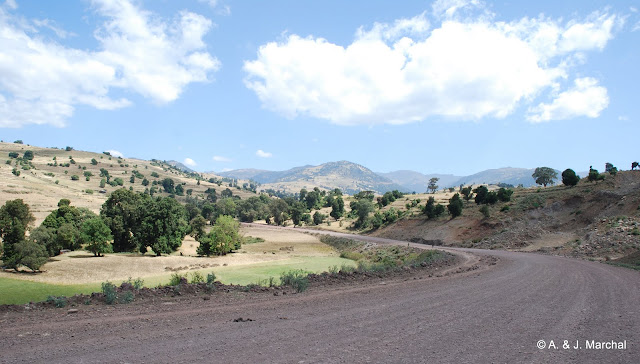




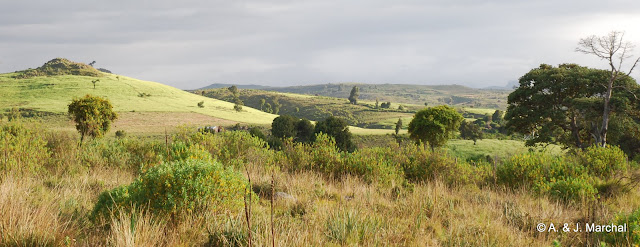
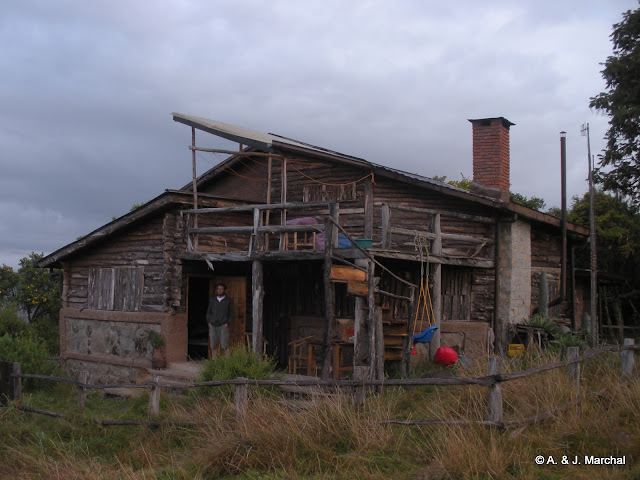






























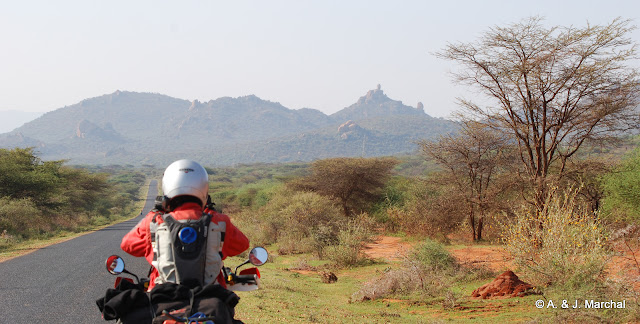

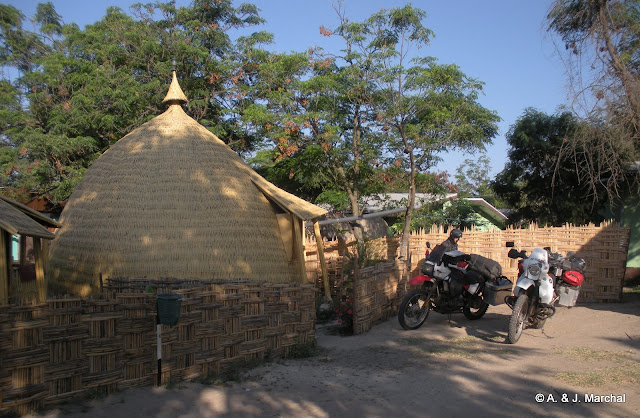
5 commentaires:
Really amazing fantastic wonderful awesome pictures!
hope you are all good, seems you are!
greets
sarah
Salut les traverseurs de frontières,
Quelle belle aventure motorisé que vous faites la! Ca me donne des sentiments nostalgique de notre voyage en Afrique. Votre super blog nous donne des idées pour le prochain voyage! Profitez-en a fond et que les problèmes que vous rencontrez peuvent devenir une joie. C'est ca l'aventure!
Keep on rolling!
Franz Sebrechts
Paule Marchal a dit…
Quelle merveille!
Au travers de ce texte et des photos, nous apprenons ce pays et pouvons deviner les émotions vécues devant tant de beauté.
Beaux bisous du Niger!
16/11/10 18:09
Lindbergh a dit…
Grand merci pour ce partage d'émotions...
Bonjour de Bruxelles
18/11/10 14:18
Davida a dit…
Merci les enfants pour ces superbes images, je vous suis avec beaucoup d'attention depuis le début de votre extraordinaire aventure, merci de nous faire partager ces merveilles.
Gros bisous de Paris,
Davida
22/11/10 23:04
Enregistrer un commentaire